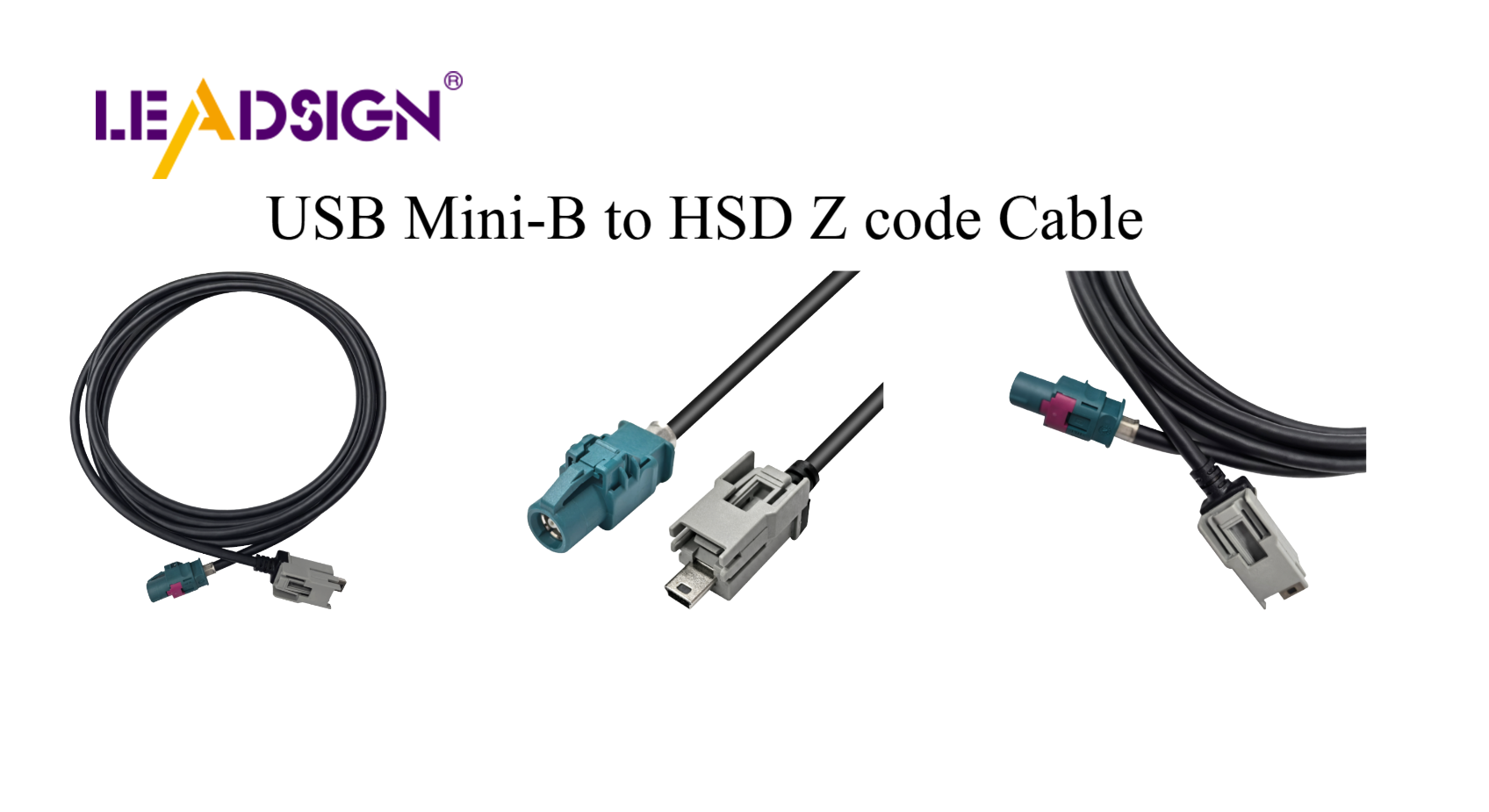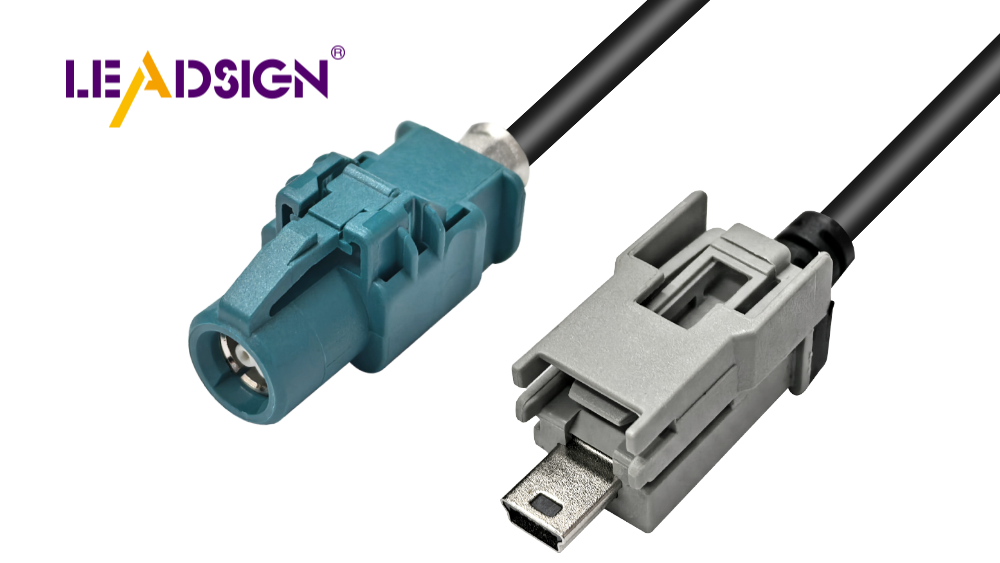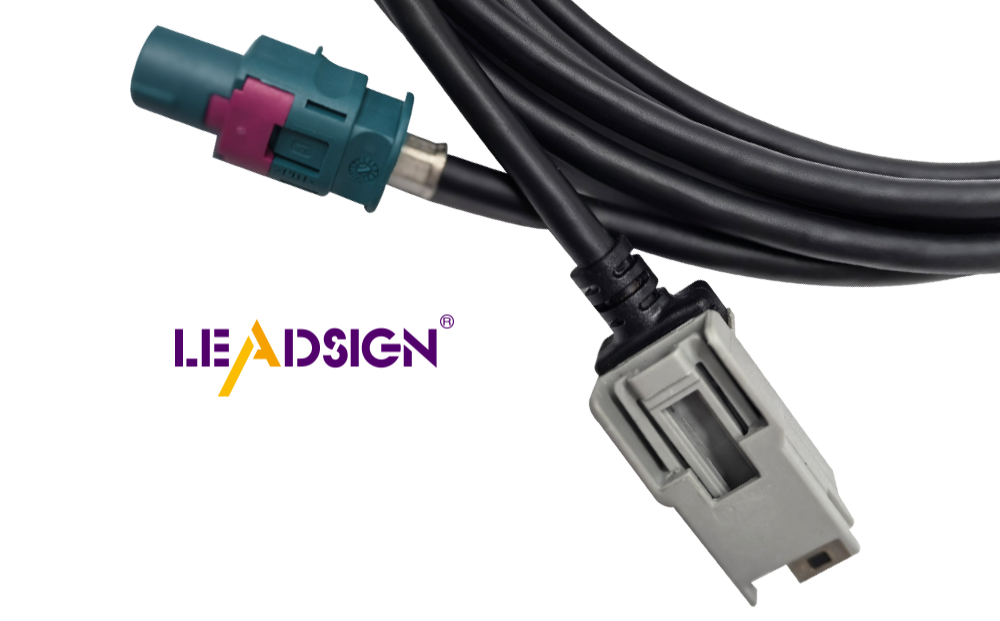Exploring the Types of Vehicle Connectors in Automotive Systems

Vehicle connectors are key parts of modern vehicles. They connect electrical systems to help different parts work together smoothly. As cars improve, the need for strong vehicle connectors increases quickly. These connectors help advanced features like electric engines, entertainment systems, and safety tools work well. The global market for vehicle connectors might reach USD 18.2 billion by 2032. They are very important for better car performance and safety. Picking the right vehicle connectors makes cars last longer, work better, and stay dependable.
Key Takeaways
Vehicle connectors are essential for connecting electrical systems in modern cars, enabling features like advanced driver-assistance systems (ADAS) and electric vehicle (EV) functionality.
Understanding the different types of connectors—such as inline, PCB mount, and wire-to-board—can help in selecting the right one for specific automotive applications.
Durability and environmental resistance are crucial for connectors, as they must withstand heat, vibrations, and exposure to elements like water and dust.
High-voltage connectors are vital for electric vehicles, ensuring safe and efficient power transfer between the battery and other components.
The future of vehicle connectors includes trends like smaller designs for weight reduction, smart connectors that utilize IoT for real-time monitoring, and the use of advanced materials for improved performance.
Choosing the right automotive connectors enhances vehicle performance, safety, and longevity, making them a critical consideration for manufacturers and consumers alike.
Types of Vehicle Connectors

Vehicle connectors help parts of a car work together. They allow power and signals to move through the car's systems. Knowing the types of connectors shows how important they are. Below, we explain their types based on design, use, and special features.
Types by Design
Inline Connectors
Inline connectors are very common in cars. They join two wires directly for a strong connection. These are used where space is tight and setup is easy. Their small size fits well in crowded wiring areas.
PCB Mount Connectors
PCB mount connectors link wires to circuit boards. They keep parts on the board connected securely. Examples include pin headers and screw terminals. These are key for advanced car electronics.
Wire-to-Board Connectors
Wire-to-board connectors are popular because they are flexible. They connect wires to circuit boards for power and signals. They come in many sizes, from simple to complex designs. You’ll see them in safety, electronics, and entertainment systems.
Types by Use
Power Connectors
Power connectors send electricity to important car systems. They power things like the engine control unit and lights. They are strong and handle tough conditions well.
Signal Connectors
Signal connectors carry low-power signals between parts. They are used in sensors, cameras, and safety systems. They help your car stay safe and work efficiently.
Data Connectors
Data connectors move information quickly in the car. They are used in navigation, entertainment, and communication systems. With smart cars, these connectors are now very important.
Special Connectors
High-Voltage Connectors for EVs
Electric cars need high-voltage connectors for their batteries. These connectors safely move power between the battery and other parts. They are built to last and keep the car safe.
Waterproof and Weather-Resistant Connectors
These connectors protect car systems from water, dust, and heat. They are used in headlights, taillights, and undercarriage wiring. Their strong design helps them last in tough conditions.
Automotive Uses of Vehicle Connectors
Vehicle connectors are important in today’s cars. They help power and information move smoothly in car systems. This allows advanced car features to work properly. Below, you’ll see how connectors help key car systems.
Advanced Driver-Assistance Systems (ADAS)
Helping Sensors Work Together
ADAS depends on sensors like cameras and radars. These sensors collect data for features like lane assist and parking help. Connectors keep these sensors connected to the car’s systems. This ensures accurate data is collected and used. Without good connectors, ADAS features would not work well.
Keeping Data Moving Smoothly
ADAS needs fast and steady data flow to work. Special connectors handle large amounts of data without errors. They work even in tough conditions like heat or vibrations. This helps ADAS make quick decisions, improving safety and driving ease.
Engine Control Units (ECU)
Sending Power and Signals to the Engine
The ECU controls the car’s engine system. It needs strong connectors to send power and signals. These connectors link the ECU to parts like fuel injectors. They help the engine run better, use less fuel, and pollute less. These connectors must last in the hot engine area.
LiDAR and Radar Systems
Helping Self-Driving Cars
LiDAR and radar systems are key for self-driving cars. They help the car “see” by finding objects and measuring distances. Connectors in these systems must send data quickly and stay connected. They are built to work in all weather. As self-driving cars improve, better connectors will be needed for these systems.
Electric Vehicles (EVs)
Electric cars need special connectors to work well. These connectors help move power and keep systems reliable. They are very important for making EVs run smoothly.
High-Voltage Connectors for Battery Systems
High-voltage connectors are key for EV batteries. They move power between the battery, motor, and inverter. These connectors handle high power safely and efficiently. They are built to survive heat and vibrations in EVs. Strong connectors help cars run safely, even in tough conditions.
High-voltage connectors are made for reliable power in EVs. They handle complex systems while staying strong and effective.
Charging Port Connectors
Charging port connectors let EVs recharge their batteries. They link the car to power sources for energy transfer. These connectors must be easy to use and long-lasting. They also need to fit different charging types. Good connectors make charging faster and reduce damage over time.
More EVs mean better charging connectors for speed and global use.
With high-voltage and charging connectors, EVs manage power better. These connectors improve EV performance and support eco-friendly car technology.
Key Features and Design Considerations of Automotive Connectors
Choosing the right automotive connectors helps vehicles work well and last long. These features affect how strong, efficient, and adaptable car systems are.
Durability and Longevity
Strong Against Wear and Tear
Cars shake and move a lot, which stresses connectors. Good oem automotive electrical wiring connectors are made to handle this. For example, Guchen high voltage connectors stay connected even under heavy use. This keeps car systems working in tough conditions.
Handles High Heat
Car electronics often face very hot areas, like near engines. Connectors must not melt or break in heat. Advanced automotive wiring harness connectors use materials that stay strong in high temperatures. This is very important for electric cars with hot battery systems.
Data Transmission Capabilities
Fast Data Movement
Modern cars need high-speed data for maps, music, and safety tools. Special connectors, like Sumitomo Electric EV Connectors, send data quickly and smoothly. They work with USB 3.0 and Ethernet for easy communication.
Protection from Signal Problems
Electromagnetic interference (EMI) can mess up car electronics. Shielded connectors stop this from happening. This helps systems like ADAS and LiDAR work correctly. Shielding also makes oem automotive connectors more reliable in complex setups.
Environmental Resistance
Safe from Water and Dust
Cars face rain, mud, and dirt often. Waterproof and dustproof connectors keep systems safe. For example, Guchen plastic connectors block water and dirt. They are great for lights and undercarriage wiring.
Stops Rust
Rust can ruin connectors over time. Good oem automotive electrical wiring connectors use rust-proof materials like coated metals. This keeps them working in wet or salty places. Rust-proof connectors help car systems last longer.
By focusing on these features, you can pick connectors that fit modern car needs. Whether for EVs or regular cars, strong, fast, and protected connectors improve performance.
Future Trends in Vehicle Connector Technology

The car industry is changing fast, and connectors are leading this change. As cars get smarter, the need for better connectors grows. Below are trends shaping the future of vehicle connectors.
Smaller and Lighter Designs
Cutting weight to save fuel
Modern cars need small, light parts to work better. Tiny connectors help save space and improve fuel use. Lighter connectors also make electric cars go farther on a charge. They reduce strain on wires, making systems last longer. This is key for electric and self-driving cars.
"North America leads in using lightweight connectors due to more electric cars and strict safety rules."
Small connectors save space and send data quickly. They are important for systems like maps and entertainment.
Smart Connectors
Working with IoT for instant checks
Smart connectors are the future of car tech. They work with IoT to check systems in real time. For example, they can find wiring problems and alert drivers or mechanics. This saves money and avoids sudden breakdowns.
In self-driving cars, smart connectors keep sensors and cameras connected. They help cars adjust to changes, making driving safer and easier.
"Smart connectors are making cars safer and more connected."
These connectors mix smart features with strength. They support advanced tools like fixing problems before they happen.
Better Materials
Stronger and better at conducting power
New materials are changing how connectors are made. These materials handle heat, shaking, and water better. Rust-proof coatings and tough plastics make connectors last longer in bad conditions.
Better materials also help connectors send data faster. This is vital for self-driving cars, where quick data is needed for decisions.
"Using better materials makes connectors strong and reliable for tough jobs."
By using new materials, makers are building connectors that solve today’s problems and prepare for future needs.
Adaptation for Self-Driving Cars
Helping with Faster Data and Complex Systems
Self-driving cars need advanced tools to handle lots of data quickly. These tools include sensors, cameras, LiDAR, and radar. They work together to keep the car safe and running well. Connectors are key for sending data fast and without problems.
Connectors must handle more data for self-driving cars. They send information from tools like maps and object sensors. This must happen quickly and without mistakes. High-speed connectors make sure parts talk to each other smoothly. This helps the car make quick choices, improving safety and driving.
Strong connectors also help in tough conditions. Self-driving cars face heat, shaking, and wet weather. Special connectors made from strong materials keep working in these conditions. Waterproof and dustproof connectors protect important parts from damage. This keeps the car reliable in all weather.
North America leads in using special connectors for self-driving cars. The focus on electric cars and safety rules has pushed new designs. Lightweight and small connectors are now common. They make cars lighter and save energy. These changes help cars perform better and support eco-friendly travel.
As self-driving cars improve, connectors will become even more important. They will help add new tools like smart systems and AI. This will make cars smarter and better at driving themselves. Picking the right connectors ensures cars stay strong, flexible, and ready for the future.
Vehicle connectors are important for making modern cars work well. They help systems like ADAS, electric cars, and self-driving cars by sending power, signals, and data. As cars improve, connectors bring new ideas like lighter designs and green materials. Advanced systems and 5G show how needed they are. Picking the right connectors makes cars safer, smarter, and better for the planet, helping shape future transportation.
FAQ
What are vehicle connectors, and why are they important?
Vehicle connectors join electrical systems in cars. They let power, signals, and data move easily. This helps systems like navigation and safety work well. Without them, modern cars wouldn’t work properly.
How do connectors support autonomous driving technology?
Connectors in self-driving cars handle fast data from sensors and cameras. They send data smoothly for features like object detection. These connectors are small, light, and strong to fit self-driving needs.
Fact: Self-driving cars need connectors that manage data up to 24 Gbps.
What role do connectors play in electric vehicles (EVs)?
Connectors in EVs move power between the battery and motor. High-voltage connectors make energy flow safe and efficient. Charging connectors help recharge batteries and fit different charging types.
Insight: EVs need strong connectors to handle heat, shaking, and high power.
How do waterproof connectors benefit automotive systems?
Waterproof connectors keep car systems safe from water and dust. They protect parts like headlights and undercarriage wiring. This makes them last longer in tough weather.
Why is data transmission capability critical for modern connectors?
Modern cars need fast data for systems like ADAS and navigation. High-speed connectors support USB 3.0 and Ethernet. They also block interference, keeping communication clear.
Did You Know? 5G and IoT in cars need fast, stable connectors.
What makes connectors durable in harsh conditions?
Connectors are made to handle heat, shaking, and wear. They use strong materials like coated metals to stop rust. This keeps them working in tough places like near engines.
How are connectors evolving to meet future automotive needs?
Connectors are getting smaller, lighter, and smarter. Light designs save fuel and extend EV range. Smart connectors find problems early, saving money and improving safety.
Trend Alert: The connector market is growing with EVs and smart cars.
What are smart connectors, and how do they work?
Smart connectors use IoT to check car systems in real time. They find wiring problems and send alerts. This helps fix issues early and keeps cars safe.
How do connectors contribute to vehicle safety?
Connectors link safety systems like airbags and cameras. They stay connected in tough conditions. This helps systems like ADAS and LiDAR work well.
What should you consider when choosing automotive connectors?
Pick connectors that are strong, fast, and weatherproof. Look for ones that handle heat and block interference. Good connectors keep your car running safely and smoothly.
See Also
Unveiling The Advantages Of Fakra Connectors In Vehicles
Understanding HSD Connectors: Key Components In Automotive
Why Fakra Connectors Matter In Today's Automotive Design
Enhancing Vehicle Data Flow With Advanced Connectors And Cables

